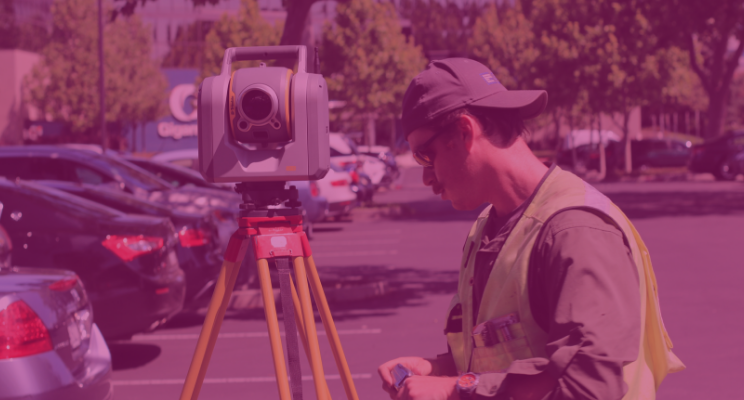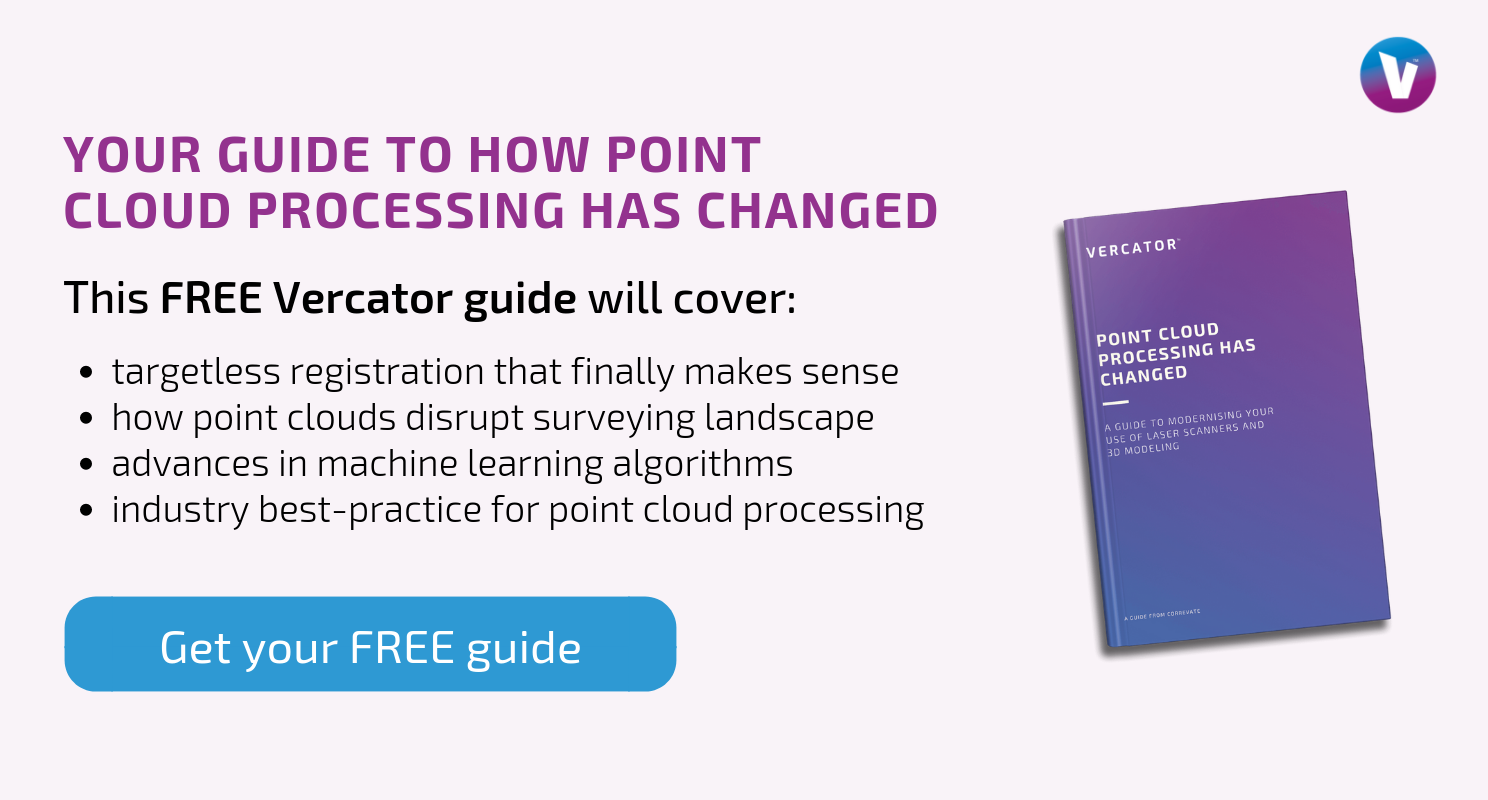How surveyors can benefit from automation

Taking precise and accurate measurements of physical space is hard, particularly if you want to do it in three dimensions. To do this, surveyors rely heavily on automated and digital processes. Software programs are critical to taking measurements with laser scanners, and turning the data generated by all types of distance sensors into comprehensible maps. The survey output that now seems commonplace is somewhat inconceivable to imagine without various forms of automation.
The question is really if surveyors can benefit further from automation. Here, we will focus on recent advances in point cloud registration that are changing the game when it comes to the use of artificial targets and point cloud processing — bringing automation to several of the remaining manual tasks impacting surveyors.
The problem of registration targets and point cloud processing
Laser scanners and point clouds are the technology that really allowed for widespread 3D modelling. They enable ‘point and click’ measurements in enough directions that computers can stitch together robust 3D renderings. This not only transformed the types of maps that surveyors could produce, it transformed how surveyors went about producing them.
The problem that surveyors still have is making sure that the data they collect can be used to create a final survey. Laser scanners make line-of-site (LOS) measurements, meaning that under most circumstances multiple scans are needed to thoroughly map an area. For large surveys, this can stretch into the hundreds if not thousands of scans. Without a registration process that ‘fixes’ each successive scan in a common context, surveyors are unable to create a completed point cloud survey.
Traditionally, this has meant the placing of point reducible targets in areas of adjacent scan overlap. The problem is that this adds an additional manual process to field scanning. A minimum of three targets are generally required for each pair of scans. Surveyors must think about each successive scan in order to attain appropriate target placement. For surface targets, subsequent scan angles must also be accommodated. Target range needs to be considered based on the type of targets, their size, the relative location of the scanner and scan resolution settings. These targets must be manually placed and then remain static. The more complex and dynamic the environment, the harder this task becomes.
Why point cloud processing software has changed the need for targeted registration
The way to avoid the manual process of artificial target placement for point cloud registration is to use common natural features. Software can identify distinct natural features from multiple angles and use those to stitch together multiple scans. This is not a new idea, it has just never fully delivered on promises.
The problem with approaching scan data using a targetless registration process is that it takes too much time in the office. Using traditional processing software, any time saved in the field by avoiding artificial target placement is more than paid for in the office. The impact this has on productivity is huge because traditional processing software requires manual oversight of nearly the entire registration and alignment procedure.
For example, a 130 scan point cloud dataset of a medium-sized building will likely take nearly 25 hours to process using traditional targetless registration software. Those scans may have only taken a day to collect, but manual involvement in processing means that the registration of that dataset will take at least three days of work! The missing key to the development of practical targetless registration is automated processing software. This now exists.
How this new approach to point cloud processing works
Rather than looking to assess all of the data points independently, breaking apart the registration process into three distinct stages (rotational, horizontal and vertical alignments) allows each to be approached more thoroughly, yet with greater automation and at greater speed. It even enables a decrease in the required scan overlap for targetless registration from a standard 60% to as little as 30% in distinct environments.
The positional data of a scanner can be used to extrapolate each point into a directional vector with a normalised length of 1 unit. This allows each vector to be lifted from its original context and an entire point cloud to be collapsed into a single point— creating a ‘vector sphere’. This allows for easy rotational analysis via placing adjacent scans inside one another. This spherical analysis then allows for separate and rapid 2D point density alignments on the horizontal and vertical axes.
Summary: Automation in the office has enabled the ditching of manual field processes
Targetless registration of point clouds finally makes sense. There is no longer a need to choose between saving time in the field and wasting time in the office. Automation in the office has made taking an automated approach to in the field scanning a win-win strategy.
This is increasing the efficiency of point cloud creation, allowing surveyors to undertake more surveys more quickly. This advance is also lowering the price of point cloud commissioning, opening up the use of the technology to an expanding number of industries, businesses and projects — creating new clients for surveyors who embrace this evolving technology.
Tags: surveying

